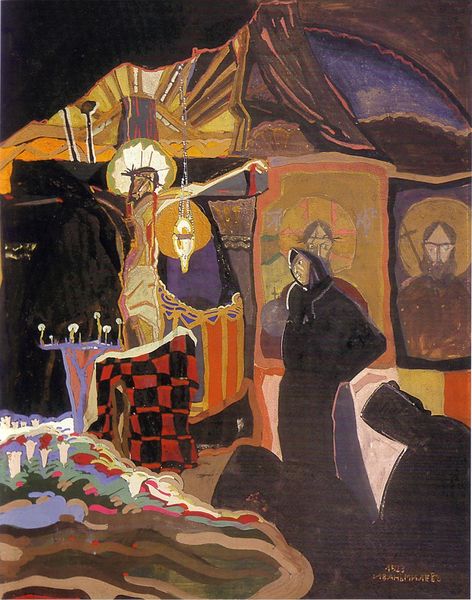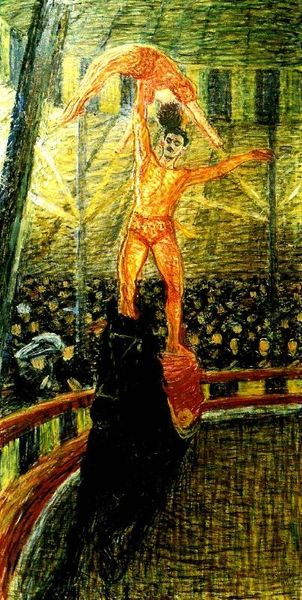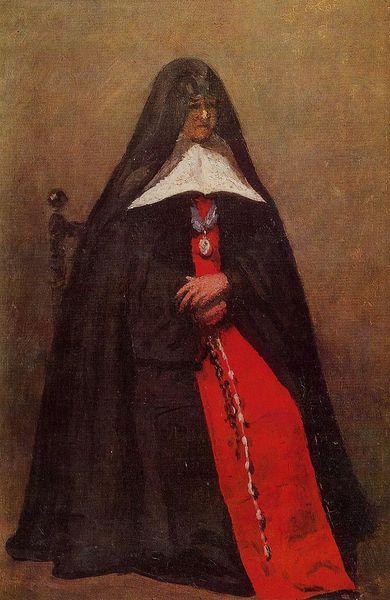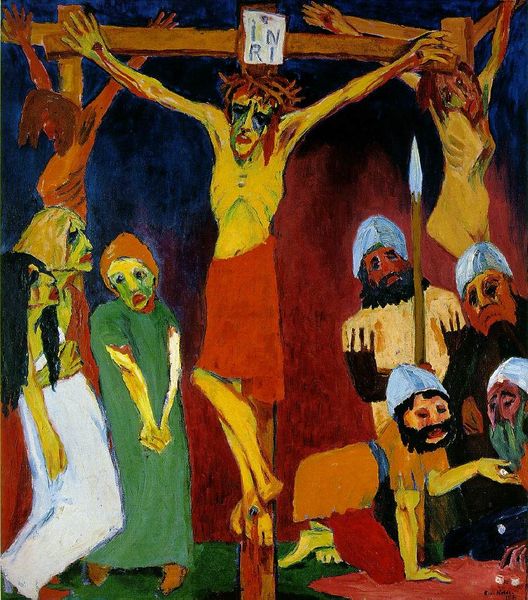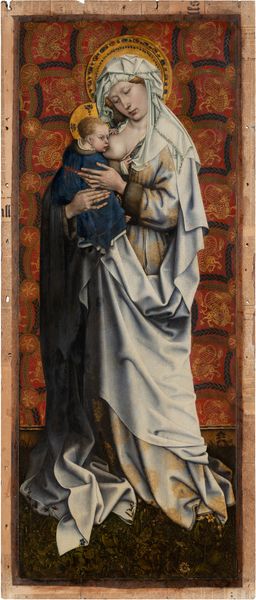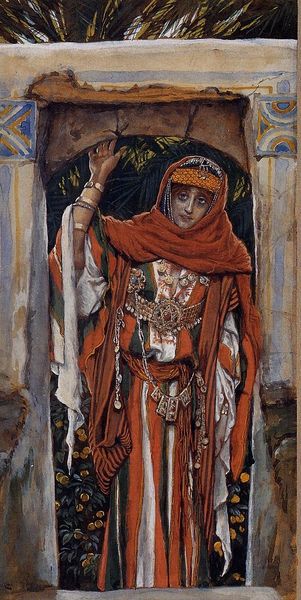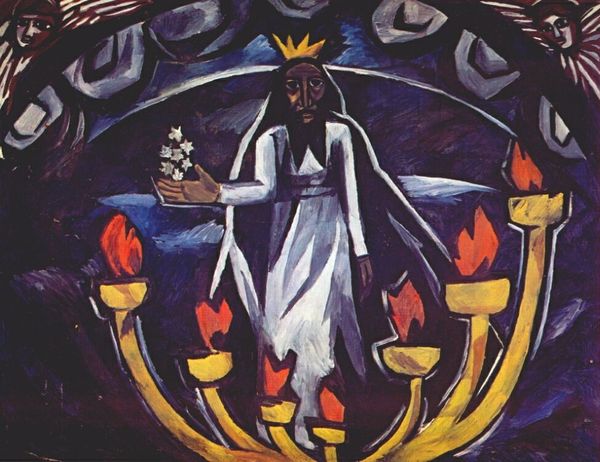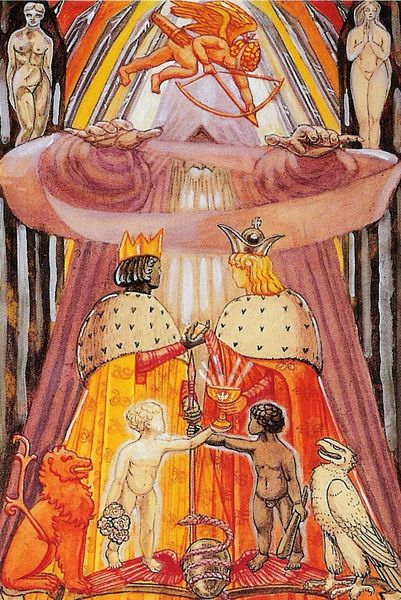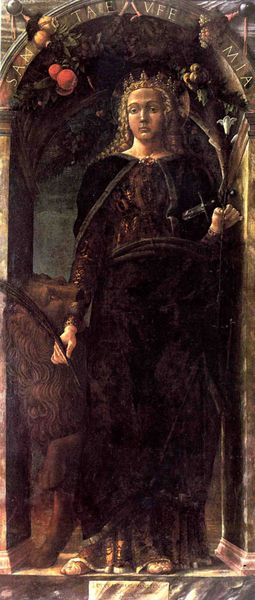
painting, oil-paint
#
portrait
#
painting
#
oil-paint
#
oil painting
#
russian-avant-garde
Copyright: Public domain
Curator: Today we're looking at Boris Kustodiev's "Abbess," an oil painting created in 1920. Editor: What strikes me immediately is the stark contrast. The abbess herself, shrouded in what appears to be an endless cloak of black, stands in opposition to the swirling, brightly colored mural behind her. Curator: That dark, enveloping cloak is quite significant, isn't it? It visually represents the Abbess's separation from the secular world, a voluntary embrace of humility and piety. Black, in this context, isn't about mourning; it's about renunciation. And it draws all the focus to the hands holding a set of prayer beads. Editor: I see that, and it really amplifies the visual weight. The artist’s touch here is superb, rendering subtle folds that imply form beneath what could easily dissolve into shapelessness. Those hands also anchor the gaze – delicate but firm, suggesting inner strength. It's an interesting counterpoint with the vibrant iconographic mural, isn’t it? A flatness behind a volume. Curator: Indeed. And that backdrop itself isn't merely decorative. It evokes a sense of cultural and spiritual history, situating the Abbess within a lineage of faith, and also the legacy of Russian orthodox Christianity in the fabric of culture and historical memory. These images of saints and angels have layered meanings accumulated over centuries, reminding the viewer of that vast symbolic space. Editor: I wonder if the painting comments on the Russian Avant-Garde of that period; the Abbess stands seemingly against its utopian vision through her conservatism, perhaps? Yet, compositionally the mural isn't at all traditional or even academic, even while featuring classic characters. Curator: Kustodiev certainly plays with tensions, using the Russian Avant-Garde techniques, but to depict figures so enmeshed in pre-revolutionary tradition and spirituality. A potent statement, especially painted soon after the Revolution. Editor: For me, this composition of this piece captures something essential about conflicting ideas living alongside each other, through colour, depth and tone. Curator: Yes. In the Abbess, we see not just a portrait of an individual, but an embodiment of devotion juxtaposed against radical cultural shifts in society during and post-revolution. Editor: It gives me so much to reflect on with each new look. Thank you.
Comments
No comments
Be the first to comment and join the conversation on the ultimate creative platform.
